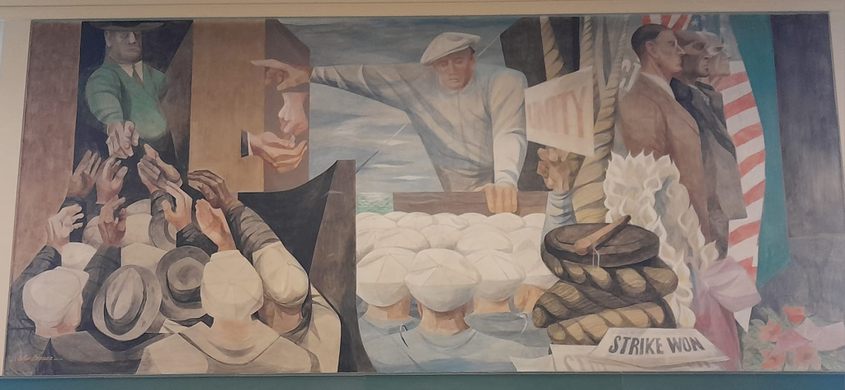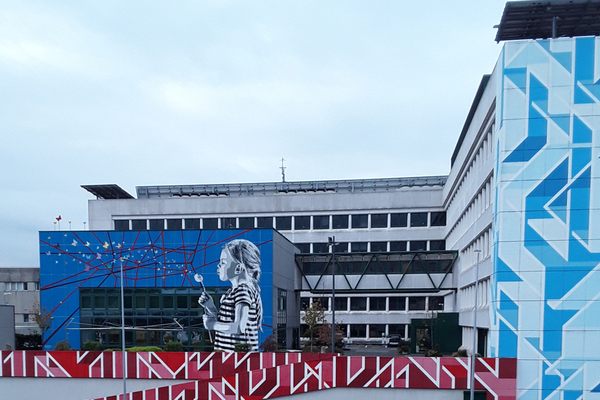Rincon Center Murals
These WWII-era murals were initially booed as a libelous portrayal of the American dream but have survived multiple attempts to have them destroyed.
The Work Projects Administration (WPA) was the source of countless classic works of American art, but their largest painted commission, the series of murals at what is now Rincon Center, was almost instantly reviled for its realist, some say communist, portrayal of California’s past.
The murals were the work of Russian-born artist Anton Refregier who won a competition to paint the works in the newly built Rincon Annex Post Office. From a period between 1941-1948, interrupted by the outbreak of World War II, Refregier created 27 murals on the walls of the post office’s main hall. He worked in a “social realist” style that endeavored to paint the lives of the working class as they were with little aggrandizement. Unfortunately almost from the outset, his works came under attack. Even as the artist worked on the pieces, the criticisms started rolling in ranging from a church group complaining that a friar was too fat in comparison to the Indians he was aiding to depictions of union victories and the triumphs of Chinese labor in America being shouted down. Each time, the artist dutifully made adjustments, erasing controversial symbols and changing the race of any offending figures. Even as he actively worked to appease his critics, the vitriol towards his works intensified to the point that near the finish, Refregier refused to work on the murals past sunset due to groups of rabble-rousers that would show up on site to make trouble.
Once the murals were finished, criticisms of the populist works intensified further as Red Scare alarmists started seeing Communist overtones all of the red-colored items among the murals. A motion to destroy the works even made it to court in 1953, with the backing of the California State Senate. Luckily the furor over the works died down and the murals were given a stay of execution.
The post office gave up ownership of the space in the 1980s and it was developed into a commercial and residential space. The murals were restored as a part of this development. However as the space expanded, the murals were once again put on the chopping block, only to be saved by the lobbying of art preservationists.















































Follow us on Twitter to get the latest on the world's hidden wonders.
Like us on Facebook to get the latest on the world's hidden wonders.
Follow us on Twitter Like us on Facebook